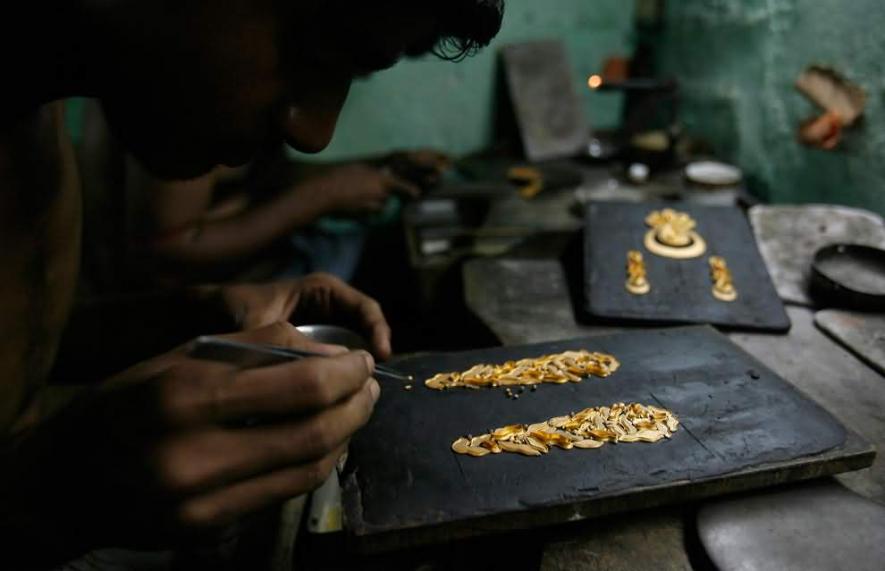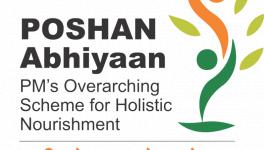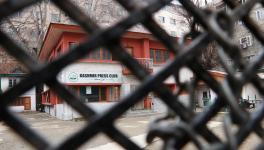How Growing Supply of Impure Gold is Hurting Ornament Artisans the Most

Representational image. | Image Courtesy: bilaterals.org
Kolkata: The quality of gold these days is an additional reason for worry for Uttam Ghorai and Ramprasad Hait, karigars (artisans) who have sweated it out for many years in Mumbai’s congested but well-known ornament-making lanes.
Their struggle for existence continues, may be under somewhat improved conditions, but the workplaces where they speculate about the quality of gold they have to treat next, are turning into virtual sweatshops.
The concerns of Ghorai and Hait, shared by many other karigars in other places in the country, stems from growing supply of impure gold as 24-carat pure metal by unscrupulous bullion dealers and jewellers. The phenomenon, first noticed by the organised sector of the jewellery trade in North India, has now spread to other regions, especially in the last one year.
In written answers to questions posed by NewsClick, Surendra Mehta, the national secretary of India Bullion & Jewellers Association, said the situation was adversely impacting karigars, as they have no option but to deliver ornaments ordered by the shopowner –- seth-- who has undertaken the job of meeting consumer specifications on quality and design. The karigars say they feel awkward as despite the fact that the metal handed over to them carries, say, quality mark of 99.5, they are asked to add the alloying element, as advised.
On testing the gold, very often they find higher impurity of, say, 99.45. To satisfy themselves, they recheck and even get it tested by a third party, but they dare not go back to the seth and say that the metal they were given contained higher impurity. In the process, testing takes much more time that it normally entails. Also, the karigars’ focus now shifts to removing the extra impurity. What makes matters more difficult is that all this has to be done in the stipulated time, as the shopowner has already committed a firm delivery date to the consumer concerned.
Things, at times, come to such as pass that for upgrading the purity to the ordered specifications, karigars draw upon what is “their own possession of the precious metal for a rainy day”. They do not get any compensatory payment. What they are paid is the amount fixed for for executing the order. If they do not follow this, they stand to lose because the seth may either look for a replacement or deny them fresh assignments, at least for some time.
The extra workload on karigars and their having to use occasionally their own gold for removing metal impurity was confirmed to NewsClick by Pankaj Parekh, owner of an upscale export-oriented jewellery outlet in Kolkata. Parekh also heads the Indo-Italian Chamber of Commerce and Industry, Eastern Region Committee.
IBJA’s secretary Mehta said the association had already issued several advisories to buyers and sellers. Now, taking note of the gravity of the situation, it has issued warnings against purchase and sale of impure gold bars and has decided to take up the matter with the police and inform the income-tax department.
At present, because of high gold prices, the demand for ornaments is subdued. Mehta, however, sees chances of a revival of demand during the forthcoming festive season.
But his optimism is not shared by Ghorai and Hait, who said the extraordinarily high gold prices had badly affected demand for ornaments which, in turn, has shrunk job opportunities for karigars. Karigars like Ghorai and Hait had moved to Mumbai mainly from Midnapore, Howrah and Hooghly districts of West Bengal some 30-40 years ago in search of livelihood opportunities.
The number of gold artisans throughout the country is placed at over 45 lakh. The upgradation of their skills and improving the quality of their life have been discussed at various forums from from time to time and studied by several committees, but in vain.
Most of the gold karigars have to perform high-stress jobs. The trade is heavily gold import-dependent – over 85% and up to 89%. Because of health and safety concerns, the karigars with improved skill levels acquired with experience are forced to call it a day when they are 40-45 years old. The aspirational younger generation, better educated than their elderly kin, do not see it as natural for them to join this trade.
It may be mentioned that a high-power committee set up by government think-tank NITI Aayog and headed by its principal advisor Ratan P Watal had, in its report submitted in early 2018, recommended the setting up of a gold board of India, initially with an advisory role and later to be converted into a statutory body under the Union Finance Ministry. The proposal was to make it function on the lines of the Coffee Board and Tea Board.
The Watal committee had also advised the setting up of a gold domestic council under the Union Department of Commerce as an association of all domestic gold industry players for discussing policy-related issues. This council should, it was suggested, be represented on the proposed gold board of India. These suggestions remain to be acted upon even though nearly 18 months have passed since the report was submitted.
Get the latest reports & analysis with people's perspective on Protests, movements & deep analytical videos, discussions of the current affairs in your Telegram app. Subscribe to NewsClick's Telegram channel & get Real-Time updates on stories, as they get published on our website.
























